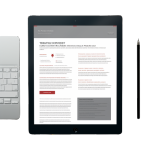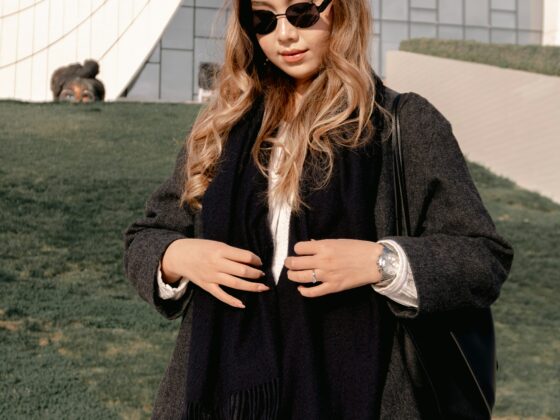
Why intentional choreography turns a product into an experience—and how you can apply it.
Working in the luxury industry, I’ve come to believe something fundamental: Luxury doesn’t live in the product. It lives in the experience surrounding it. And at the core of that experience? Ritual.
Ritual is what transforms a beautiful object into something sacred. It’s what makes a customer slow down, become present, and ultimately form an emotional bond with your brand. It’s how a handbag becomes an heirloom, how a timepiece becomes a legacy, how a bottle of perfume becomes part of someone’s identity.
When I design experiences for luxury brands, I always ask:
- What happens before the product is even touched?
- How do we create a sense of reverence?
- What’s the choreography of the moment?
And I often think back to my own experiences—not just as a professional, but as a customer.
What Luxury Feels Like: My Own Rituals
I remember when I bought my wife her first
Goyard
bag. The boutique wasn’t loud or crowded. It was calm, quiet, and precise. Every movement seemed intentional. After we chose the piece together, the sales associate carefully placed it in a yellow dust bag, her hands moving with the kind of grace that made you want to slow down and watch. Then, almost ceremoniously, she lowered it into Goyard’s iconic green shopping bag—its deep, rich colour embossed with a gold logo. A yellow ribbon was tied around it with perfect symmetry. What we left with wasn’t just a bag; it was a memory. A moment we still talk about. That’s the power of ritual.
I felt something similar the first time I unboxed an
Apple
product. The packaging was so well-designed it controlled the experience for me. The box lifted slowly, held back by air resistance, forcing me to pause. That brief moment of waiting, the subtle tension and release, made it feel like I was unsealing something precious. It was deliberate. And it worked.
These moments stay with you. They shape how you feel about the brands that create them. Because luxury is never transactional—it’s ceremonial.
Ritual Is the Essence of Luxury
The world’s most desirable brands understand this. They choreograph rituals that engage the senses, heighten anticipation, and tell their story without words. Rituals create meaning, turning a product into a treasure, a service into a memory, and a brand into a legend.
Here are seven brands that have mastered ritual—each one intentionally designed to deepen emotional engagement and reinforce identity. After each example, I’ll share how you can apply the thinking to your own brand, whether you’re in fashion, hospitality, gastronomy, or beyond.
1.
Hermès
: The Unboxing Ceremony 👜
The Ritual: Clients receive the signature orange box, hand-tied with a ribbon, wrapped in impeccable layers of tissue. There’s weight to it, a hush in the exchange. Some clients even delay opening their purchase until they’re in private, heightening the sense of anticipation.
Why It Works: Hermès slows the moment down, making it ceremonial. Every layer—visual, tactile, even olfactory—reinforces brand codes.
Apply This:
- Create packaging that demands attention and care.
- Incorporate distinctive sensory elements—colour, texture, scent—that become part of your brand signature.
- Design the handover moment as a gift exchange, not a transaction.
2.
Apple
: The Unboxing & Store Experience 📱
The Ritual: Apple’s packaging is an exercise in restraint and precision. Opening the box is slowed by air resistance, building tension. In their stores, products are laid out on uncluttered tables for hands-on discovery, creating an atmosphere of calm focus.
Why It Works: Apple creates intimacy with their product. The experience feels considered and personal, removing barriers between the customer and the object.
Apply This:
- Simplify your product presentation—remove distractions.
- Control the pace of interaction—make customers pause before they engage.
- Use minimalist design to frame your product as an object of desire.
3.
Patek Philippe
: The Handover Ceremony ⌚
The Ritual: Patek Philippe watches, especially Grand Complications, are delivered in private salons. They are presented in hand-polished wooden boxes, often with gloves. The retailer shares the watch’s lineage and explains its mechanical artistry before the handover.
Why It Works: It’s not a sale; it’s an induction into a legacy. The privacy and storytelling create reverence.
Apply This:
- Make significant deliveries feel like milestones, not transactions.
- Include storytelling as part of the reveal—history, craftsmanship, personal significance.
- Offer privacy and intimacy for the most important moments.
4.
AMOUAGE
: The Fragrance Ceremony 🌸
The Ritual: In Amouage boutiques, fragrance selection is a guided journey. Consultants help you explore scent layers and uncover the story behind each perfume. The first spray is often ceremonious, marking the beginning of the client’s relationship with the fragrance.
Why It Works: The process builds trust and emotional investment. Sensory exploration becomes personal discovery.
Apply This:
- Introduce rituals that invite customers to experience your product through guided discovery.
- Slow down the pace—let people savour each step.
- Use sensory storytelling to deepen emotional connections.
5.
Louis Vuitton
: Mon Monogram Customisation 👜
The Ritual: Through Mon Monogram, clients co-create their bag’s design by choosing colours and initials. The experience involves both selection and waiting—creating anticipation before the personalised piece is ready for delivery.
Why It Works: Participation makes ownership more meaningful. Waiting enhances value.
Apply This:
- Offer customisation or personalisation that reflects individual stories.
- Embrace delayed gratification—use waiting as a way to build excitement.
- Make the final reveal as special as the creation process.
6.
Berluti
: The Patina Ritual 👞
The Ritual: Berluti invites clients to select patina finishes in collaboration with artisans. The shoes are transformed over weeks and often return with personalised touches like monogramming. Clients return regularly to maintain or refresh the patina.
Why It Works: It fosters an ongoing relationship. Care becomes part of the product experience.
Apply This:
- Offer rituals of care that encourage customers to stay connected to your brand.
- Celebrate craftsmanship as a living process, not a one-time purchase.
- Invite customers behind the scenes of your creation process.
7.
Shiseido
: Beauty Touch-Up Rituals 💄
The Ritual: Shiseido’s in-store consultations are structured as soothing, multi-step processes, each gesture deliberate and graceful. The focus is on ritualised care, not just selling products.
Why It Works: The experience feels like self-care, not a sales pitch. Time slows down, and the customer feels valued.
Apply This:
- Build rituals that offer clients a sense of nurturing and care.
- Design services that are as much about presence and mindfulness as they are about product delivery.
- Make small gestures feel intentional and graceful.
Why Rituals Matter in Luxury
Rituals aren’t just about adding a layer of sophistication. They’re about crafting meaning. When you design rituals into your brand experience, you:
- Deepen emotional connection
- Reinforce your brand identity through action
- Heighten perceptions of exclusivity and craftsmanship
- Encourage repeat engagement and long-term loyalty
So remember to ask yourself: What are the rituals that make my experience unforgettable? What moments of anticipation and reverence am I creating? How can I slow people down and invite them to savour the experience?
Because luxury isn’t only defined by price or scarcity. It’s defined by how you make people feel. And ritual is the most powerful tool we have to create that feeling, one where the experience becomes the product.






